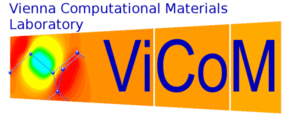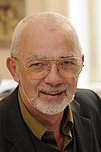


This project has been discontinued. Their work continues within projects P13 and P14.
The central issue of the subproject was the Cluster Expansion (CE), which serves as a tool for searching a large configuration space based on a reasonably small set of DFT calculations. Three main investigators were involved, among which J. Hafner and R. Podloucky dealt with first principles aspects, and E. Kozeschnik with applied and model potential applications.
Efforts were made in developing new features for the CE and applying CE to specific topics. CE was applied for searching ground state and metastable structures for TixNb1-x alloys in connection with gum-metal properties. The main issue was to pin-point the most important high-temperature bcc structures. CE in combination with Monte Carlo (MC) studies were done for Fe-rich FexCu1-x alloys by including vibrational free energies which made the cluster interactions temperature dependent. By that, the Cu-solubility was correctly predicted from first principles. A bulk study investigating hydrogen ordering in lanthanum hydrides, where the hydrogen concentration-dependent metal-insulator transition related to the "switchable mirror" phenomenon was elucidated. A layer dependent CE for studying surface segregation of a carbon covered Pt25Rh75 surface was made for which a formalism separating the interacting subspaces was introduced. Two studies on transition metal oxides were done for getting experience with post DFT functionals. The study of CoO layers with its complicated magnetic ordering stimulated the idea to focus further CE studies on magnetic structures and magnetic properties. The work on magnetic low temperature phases of fcc Fe involving spin CE and spin waves indicated a new and strikingly simple collinear solution for the long existing riddle of metastable fcc tetragonal phases. The Curie temperature of bcc Fe is under study by introducing more general spin directions resulting in a CE with 8 sublattices. First steps were made for a first-principles treatment of CE plus kinetic MC.
From the CE results in binary Fe-Cu, we calibrated efficient, chemical composition dependent pair potentials, by which we bridged the gap between density functional theory calculations and large-scale MC simulations. With these potentials it was possible to predict the cluster evolution from first-principles in good agreement with experiments. In parallel, we utilized advanced statistical thermodynamics to evaluate the free energy curve and the interfacial free energy for Cu-precipitates in the Fe-Cu system.
| Podloucky, Raimund Principal Investigator, P10 | University of Vienna Physical Chemistry |
| Kozeschnik, Ernst National Research Partner, P10 | Vienna University of Technology Institute of Materials Science |
 | Hafner, Jürgen National Research Partner, P10 | University of Vienna Compuational Materials Physics |